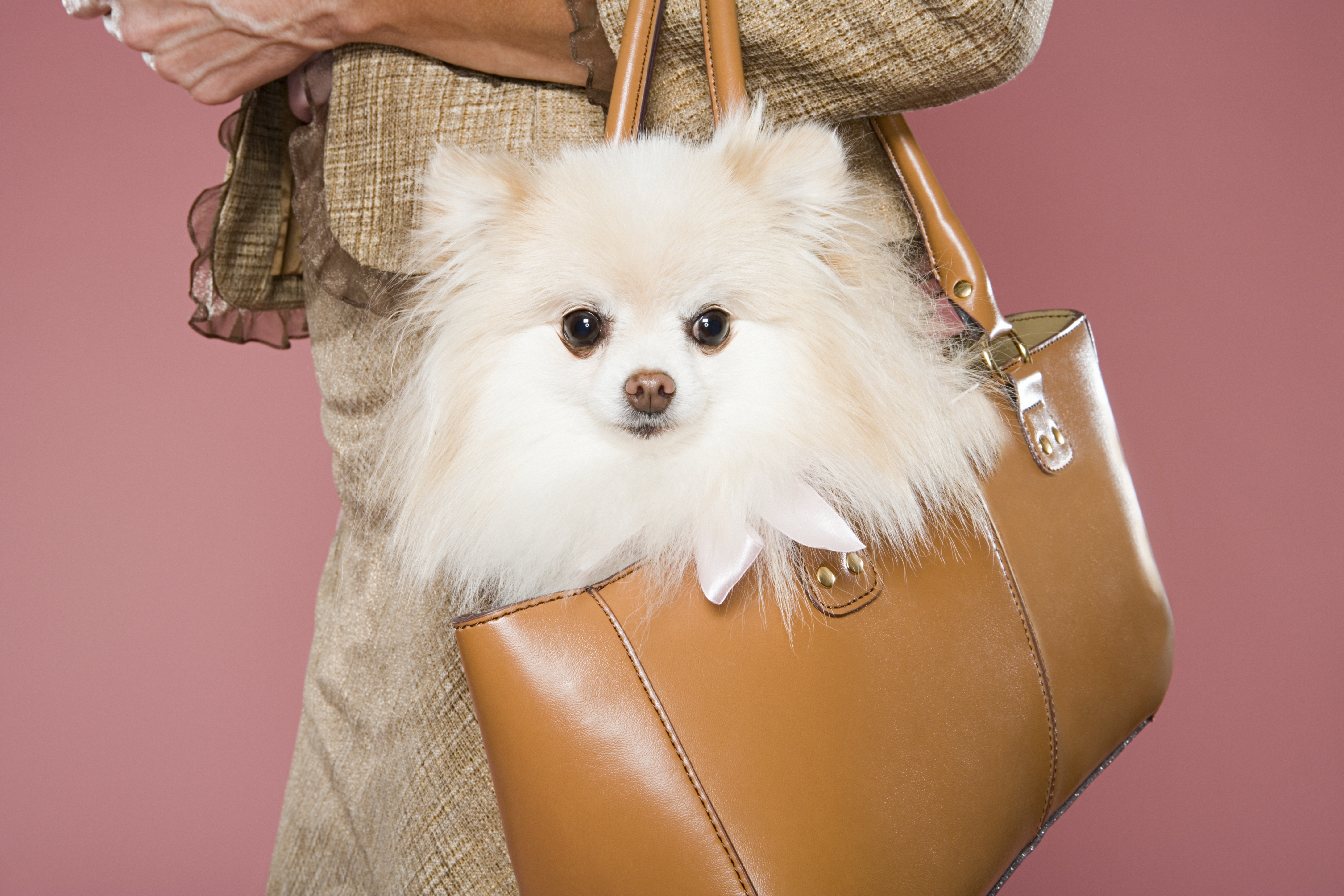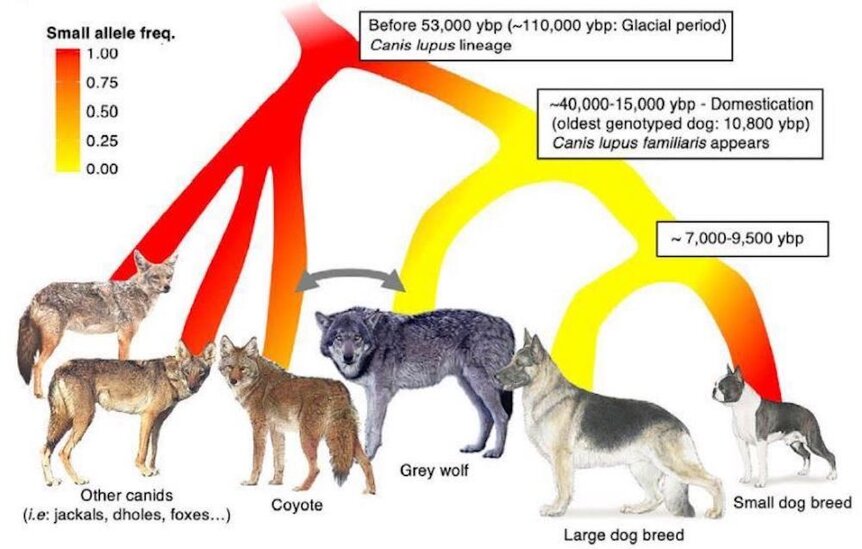Create a free profile to get unlimited access to exclusive videos, sweepstakes, and more!
Humans may have made dogs small, but the power was inside wolves all along
Carrying dogs in backpacks and purses was a genetic inevitability.

Looking at a modern dog, it’s hard to believe they were wolves not too long ago, evolutionarily speaking. In the millennia since their domestication, we’ve twisted them into animals of all shapes and sizes, from the large and lumbering to the small and yappy.
Dogs are, in fact, the most variable mammalian species on Earth in terms of size, and that’s due largely to human intervention. It turns out, though, that we can’t take all of the credit. It wouldn’t have been possible at all if dogs weren’t already primed for size variation in their DNA.
Elaine Ostrander and Jocelyn Plassais, scientists from the National Human Genome Research Institute (NHGRI), and colleagues from other institutions, have been searching for the genetic triggers which allow for the wide variety of sizes apparent in dogs. As is the case with most genetic expression, the causes are complicated, but a recent discovery unlocked a significant part of the story. The results of their recent findings, made possible through contributions from dog owners all over the world, were published in the journal Current Biology.
“This is a citizen science project, and it works because people all over the world send us cheek swabs and blood samples so we can get DNA from their dogs. We don’t breed any dogs or keep any dogs in kennels,” Ostrander told SYFY WIRE.
The key to how we transformed wild canids into jowly, several-hundred-pound mastiffs, pint-sized chihuahuas, and everything between largely comes down to a gene known as Insulin Growth Factor 1 (IGF-1). The team had known that IGF-1 played a role in body size since 2007, but they weren’t sure exactly how it worked in the bodies of dogs. They’d identified the target genes running along one side of the genetic sequence, but still they couldn’t make heads or tails of the problem.
Then Plassais, who is a post-doc in Ostrander’s lab, thought to look at the canine genome in a different way. He found the mutation running in reverse on the opposite side of the DNA and suddenly the team was onto something.
“What he found was a 200 base pair piece of this gene-making RNA in the opposite direction and when the two line up they interact and prevent protein from being made. Then we started looking in different dogs and found it held up,” Ostrander said.
There’s a position inside that section of DNA which either codes to a C or a T. The team found that a C in that position is associated with small size in dogs, and a T with large size. This genetic relationship is true in domestic dogs as well as wild canids like wolves and foxes, and ancient canids from tens of thousands of years ago.
The lab reached out to colleagues who work with the remains of ancient dogs in search of this mutation and they discovered that the C allele variation was present in dogs as long as 54,000 years ago, significantly earlier than even the oldest estimates of canid domestication.
“Finding it on ancient samples from 54,000 years ago was not what we expected. But we do see it in pandas, and we see it in cats, we see it in lots of different animals, so it’s got to be pretty old. Why? What was nature doing with it in these other animals? We don’t know that answer yet,” Ostrander said.
Interestingly, it’s the C allele which appears to be more closely associated with ancient canids, suggesting that the historical standard from pre-domesticated dogs had a preference for smaller size. The comparatively larger size of modern gray wolves, for instance, looks to have been a more modern adaptation. There also appears to be a consistent push toward either the C or T allele depending on which hemisphere a dog lives, with larger canids living in the north and smaller ones in the south.
“Our naïve picture is that wolves are big, and sometime during domestication we wanted small things to go down rabbit holes and to be our pets, then the C allele popped up and we selected for that. That’s not what happened,” Ostrander said.
According to the most current evidence, we didn’t make dogs small, we just took advantage of a variation which was already present before we showed up in their lives. Thus, we can’t be entirely blamed for the wide variation seen in domesticated dog breeds. Their DNA wanted them to have that sort of flexibility.
The droopy skin, stretched out bodies, and squashed faces though, that’s on us. We’re going to have to answer for that.



























